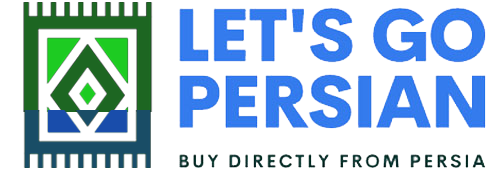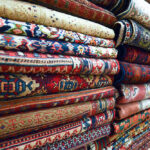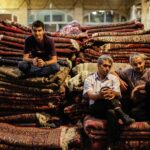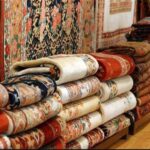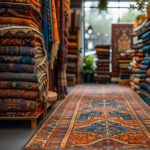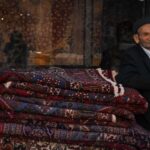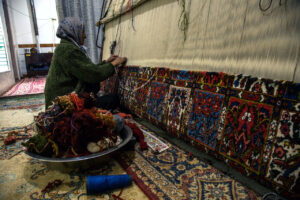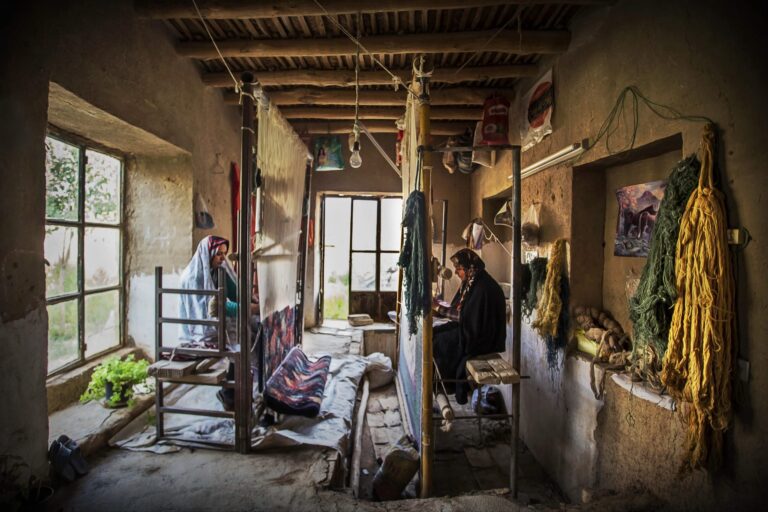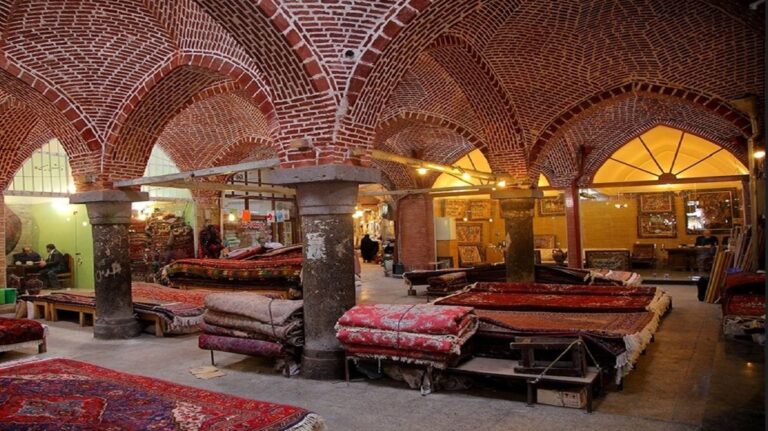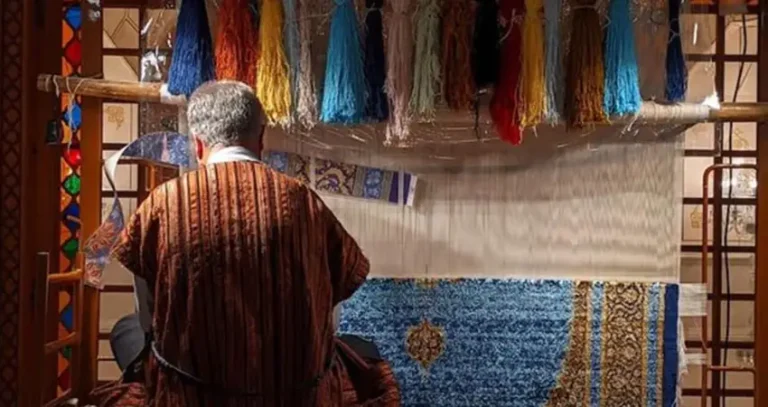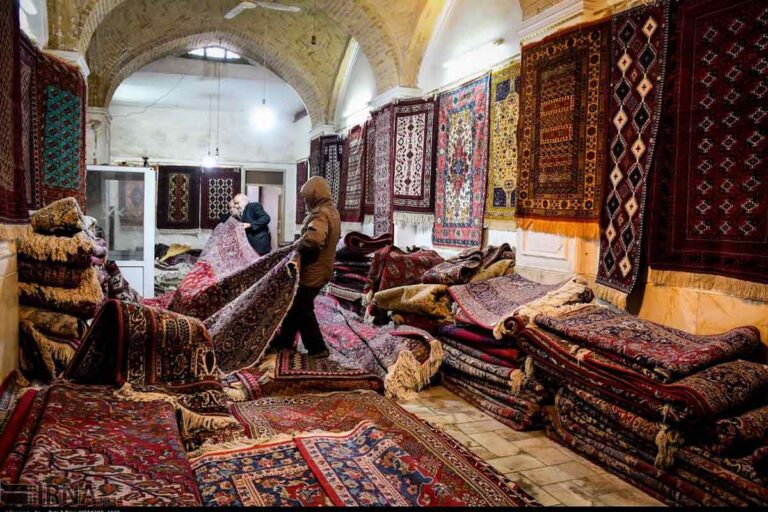Knotting Techniques of Persian Rugs by Region
Material Variations of Persian Carpets
Persian rugs are not merely decorative textiles—they are dynamic records of history, reflecting centuries of cultural exchange, political shifts, and artistic innovation. The design styles seen in rugs from various regions of Iran have been shaped by historical events, trade, and the blending of diverse cultural influences. This blog post delves into how these historical forces have impacted regional rug designs, creating distinct aesthetics that continue to inspire admiration and scholarly interest today.
The Legacy of Ancient Persia
Cultural Crossroads:
Iran has long been a nexus of civilizations. Ancient Persian empires laid the foundation for a rich tradition of art and craftsmanship. The intricate motifs and harmonious proportions found in early Persian designs continue to influence regional rug aesthetics.
Architectural and Artistic Traditions:
The reverence for symmetry, balance, and elaborate decoration in ancient Persian art is evident in the geometric and floral patterns seen across many regions. These designs were not only decorative but also imbued with symbolic meanings, reflecting religious, philosophical, and social values that have endured over the centuries.
Regional Narratives: Weaving History into Design
Tabriz: The Silk Road and Urban Renaissance
Historical Context:
Tabriz’s strategic position along the Silk Road made it a melting pot of influences from Asia, Europe, and the Middle East. The city experienced numerous dynastic changes and economic booms that enriched its cultural landscape.
Design Impact:
-
Geometric Precision: Bold, symmetrical patterns echo ancient Persian traditions and Central Asian motifs.
-
Color Symbolism: Deep reds and vibrant blues reflect the city’s historical vibrancy and the blending of indigenous and foreign elements.
Kashan: Artistic Flourish Amidst Imperial Patronage
Historical Context:
Kashan thrived under the patronage of various Persian empires, which elevated its status as a center of arts and architecture. The region was also influenced by Sufi mysticism, which added layers of symbolic meaning to its art.
Design Impact:
-
Floral and Natural Motifs: Inspired by the famed Kashan gardens and Sufi symbolism, these elements represent growth, purity, and the ephemeral nature of life.
-
Refined Aesthetics: Delicate color palettes and intricate designs speak to a refined artistic culture, nurtured by royal commissions and intellectual discourse.
Nain: A Testament to Resilience and Minimalism
Historical Context:
Nain’s isolation and relative stability allowed for the preservation of ancient techniques. The region’s historical emphasis on restraint and minimalism is a direct response to its environment and cultural values.
Design Impact:
-
Subtle Patterns: Minimalist motifs and muted color schemes are hallmarks of Nain carpets, reflecting an enduring preference for elegance and simplicity.
-
Enduring Techniques: High knot density and meticulous craftsmanship have preserved these traditional designs through centuries of quiet persistence.
Qom: Spiritual Journeys and Religious Scholarship
Historical Context:
As a center of religious learning, Qom has long been intertwined with Islamic scholarship and mysticism. The city’s history of spiritual inquiry is vividly expressed in its rug designs.
Design Impact:
-
Sacred Geometry: Intricate patterns inspired by Islamic theology and calligraphy serve as meditative tools, conveying the infinite nature of the divine.
-
Vibrant Contrasts: Bold color choices and complex motifs mirror the spiritual fervor and intellectual pursuits of its scholars.
Isfahan: Imperial Splendor and Cultural Synthesis
Historical Context:
Isfahan, once the capital of Persia, was a hub of innovation during its golden age. Its cosmopolitan nature attracted artisans from across the empire and beyond.
Design Impact:
-
Ornamental Complexity: Lavish patterns and rich color layers reflect imperial grandeur and a synthesis of diverse artistic traditions.
-
Architectural Echoes: Designs often mimic the intricate details of Isfahan’s palaces and mosques, integrating art with architectural beauty.
Kerman: Trade, Exoticism, and Artistic Experimentation
Historical Context:
Kerman’s location along historic trade routes exposed it to a wide array of cultural influences from India, China, and the Ottoman Empire. This exchange led to a unique synthesis of design elements.
Design Impact:
-
Exotic Motifs: Eclectic patterns—ranging from pictorial scenes to abstract designs—illustrate the fusion of diverse artistic influences.
-
Bold Color Choices: Vivid hues and dynamic contrasts underscore the region’s openness to experimentation and cross-cultural exchange.
Ardabil: Heritage and the Preservation of Tradition
Historical Context:
Ardabil is home to some of the most iconic and historically significant Persian rugs. The region’s designs have been meticulously preserved through generations as cultural heirlooms.
Design Impact:
-
Timeless Patterns: Enduring motifs serve as a direct link to the historical narratives of Persian art, emphasizing continuity and tradition.
-
Natural Palettes: Earthy tones dominate, symbolizing a deep connection to the land and nature.
Qazvin: Royal Influence and Dynastic Legacies
Historical Context:
Once a royal seat, Qazvin’s cultural heritage is steeped in the opulence of dynastic patronage. The city’s textiles echo the grandeur of its past.
Design Impact:
-
Regal Designs: Lavish patterns with a mix of bold and subtle elements evoke the splendor of royal courts.
-
Narrative Detailing: Intricate details serve as visual chronicles of historical conquests and cultural achievements.
Shiraz: Poetic Expression and Cultural Renaissance
Historical Context:
Shiraz is celebrated for its literary and artistic traditions. The cultural renaissance that blossomed in this region infused its art with passion and creativity.
Design Impact:
-
Expressive Patterns: Bold, lyrical designs capture the emotive spirit of Persian poetry and literature.
-
Dynamic Color Schemes: Vibrant hues and dramatic contrasts mirror the region’s fervent cultural narratives.
Yazd: Desert Landscapes and Enduring Simplicity
Historical Context:
Yazd’s evolution has been deeply influenced by its arid desert environment. Isolation and the need for practicality have given rise to a distinct, understated aesthetic.
Design Impact:
-
Subdued Palettes: Desert-inspired neutrals and occasional vibrant accents reflect the stark beauty of the region.
-
Functional Aesthetics: Designs emphasize durability and simplicity, shaped by centuries of adaptation to a challenging environment.
Sanandaj: Kurdish Heritage and Vibrant Folk Traditions
Historical Context:
Sanandaj, enriched by its Kurdish heritage, has long been a center of folk art and oral storytelling. Its turbulent history and vibrant cultural identity have fostered a unique artistic style.
Design Impact:
-
Bold Folk Motifs: Dynamic patterns and intense colors echo traditional Kurdish narratives filled with symbolism.
-
Cultural Resilience: Expressive, unconventional designs highlight the region’s enduring spirit and collective memory.
Bijar: Rugged Durability and Rural Artistry
Historical Context:
Bijar, located in the Kurdish regions of Iran, is known for its resilient, robust rugs. The region’s history of pastoral life and rural traditions has shaped its distinctive textile style.
Design Impact:
-
Bold, Rugged Patterns: Emphasize durability and functionality, reflecting a tradition of rugged rural artistry.
-
Earthy Color Schemes: Utilize deep reds, browns, and ambers that echo the natural environment and the region’s hardworking spirit.
Mashhad: Pilgrimage and Sacred Narratives
Historical Context:
As one of Iran’s holiest cities, Mashhad’s cultural landscape is imbued with religious fervor and pilgrimage traditions. Its rich spiritual history influences its artistic expressions.
Design Impact:
-
Sacred Motifs: Incorporate religious symbols and calligraphic elements that honor spiritual narratives.
-
Vibrant yet Reverent Hues: A mix of bold and subtle colors reflects both the energetic influx of pilgrims and the solemnity of its sacred sites.
Zanjan: Historical Simplicity and Evolving Traditions
Historical Context:
Zanjan, with its deep-rooted history, has long been a center for traditional crafts. Its geographic position and historical trade connections have allowed it to evolve its rug designs while retaining a classical simplicity.
Design Impact:
-
Clean, Geometric Patterns: Reflect a blend of historical precision and evolving artistic tastes.
-
Balanced Color Palettes: Use a harmonious mix of cool and warm tones that speak to both historical influences and contemporary aesthetics.
Weaving History into the Fabric of Art
The design styles of Persian rugs are living testaments to the historical events and cultural exchanges that have shaped the region over millennia. From the influences of ancient empires and Silk Road trade to the impacts of royal patronage and religious scholarship, each rug encapsulates a unique narrative. The intricate motifs, color palettes, and weaving techniques all serve as threads in the broader tapestry of Persian history.
By understanding these historical influences, we gain not only a deeper appreciation for the aesthetic beauty of Persian rugs but also a richer insight into the cultural and historical legacy of Iran itself. Every rug is more than a decorative piece—it is a woven document of the past, offering a glimpse into the soul of a civilization that has thrived on creativity, resilience, and the art of storytelling.
Embrace the journey through history and art, and let each Persian rug tell its tale—a tale of conquests, cultural exchange, and the timeless beauty of human creativity.
